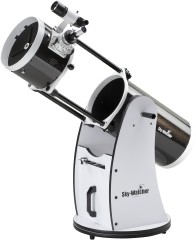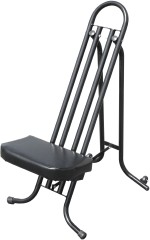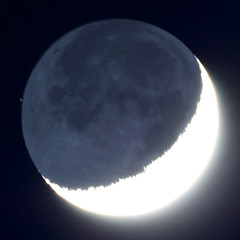Astronomical addenda
I forgot to mention that, during the high school observing session, I made one hell of a misidentification. The kids pointed to a bright star in the east, which I immediately dismissed as a plane. Except it didn’t move. It turned out to be Arcturus, the second-brightest star in the northern sky. I should have gotten that, but in my defence, my usual observing sites have obstructed views of the east. I don’t normally see anything east of Spica at this time of year.
Setting up for that session was much easier than I thought it would be: driving to the site and bringing stuff from the car in several trips is a hell of a lot less effort than trying to carry everything in your arms or on your back over several hundred metres in one trip. Who knew? Anyway, considering that we’ve had several offers of open, rural sites to observe from, car-based observing looks like a viable option. Which means that telescopes that would ordinarily be far too heavy to lug to the nearby field are back on the menu. Which means that Dobsonian telescopes — big, lots of aperture, not very expensive — are back on the menu.
 Sky-Watcher’s collapsible Dobsonians, which I mentioned last year when they were announced, are just as heavy as their solid-tube predecessors (the steel hardware required for a collapsible frame does not represent a weight savings over the portion of aluminum tube it replaces), but collapsing them does make them easier to store and move.
Sky-Watcher’s collapsible Dobsonians, which I mentioned last year when they were announced, are just as heavy as their solid-tube predecessors (the steel hardware required for a collapsible frame does not represent a weight savings over the portion of aluminum tube it replaces), but collapsing them does make them easier to store and move.
The Sky-Watcher Dobs have received mixed-to-positive reviews. Gary Seronik reviewed them twice, in each case noting a surprising flaw amid decent optics: in the January/February 2009 issue of SkyNews, he noted that the 10-inch model had a too-small secondary mirror; in the May 2009 issue of Sky and Telescope, he found that the 12-inch model’s azimuth bearings were too loose and its focuser too shallow to allow a Tele Vue Paracorr to reach focus (on an f/4.7 instrument, that’s a problem: you want a coma corrector). In other words, cheap Chinese-built Dobsonian telescopes have their quirks as usual: there’s a reason why Dobs get hacked, modded and rebuilt all the time.
 Jennifer has had her eye on the 10-inch model (which would represent four times the light-gathering capacity of our five-inch Schmidt-Cassegrain); fortunately for her pocketbook, Focus Scientific didn’t have any in stock on Saturday. We did buy a few other things while we were there, though: I put in an order for my Powermate (see previous entry); she picked up a two-inch 30-mm eyepiece (for the refractor) and an observing chair with an adjustable seat (which is something every observer — or at least every observer’s back — needs).
Jennifer has had her eye on the 10-inch model (which would represent four times the light-gathering capacity of our five-inch Schmidt-Cassegrain); fortunately for her pocketbook, Focus Scientific didn’t have any in stock on Saturday. We did buy a few other things while we were there, though: I put in an order for my Powermate (see previous entry); she picked up a two-inch 30-mm eyepiece (for the refractor) and an observing chair with an adjustable seat (which is something every observer — or at least every observer’s back — needs).
When the Powermate shows up, I’ll be able to apply it immediately to my lunar photography. Recent shots, however, are still with the apo refractor with a 500-mm focal length. Last week I took a couple of shots of the Moon as a crescent, one of which a two-second exposure to bring out earthshine:
If the skies hold tonight, I’m going to try to take photographs of the Moon through both telescopes, to see if the central obstruction of the Schmidt-Cassegrain is offset by the longer focal length.
Finally: Starfest 2009 sounds interesting. I think I’d like to go.

